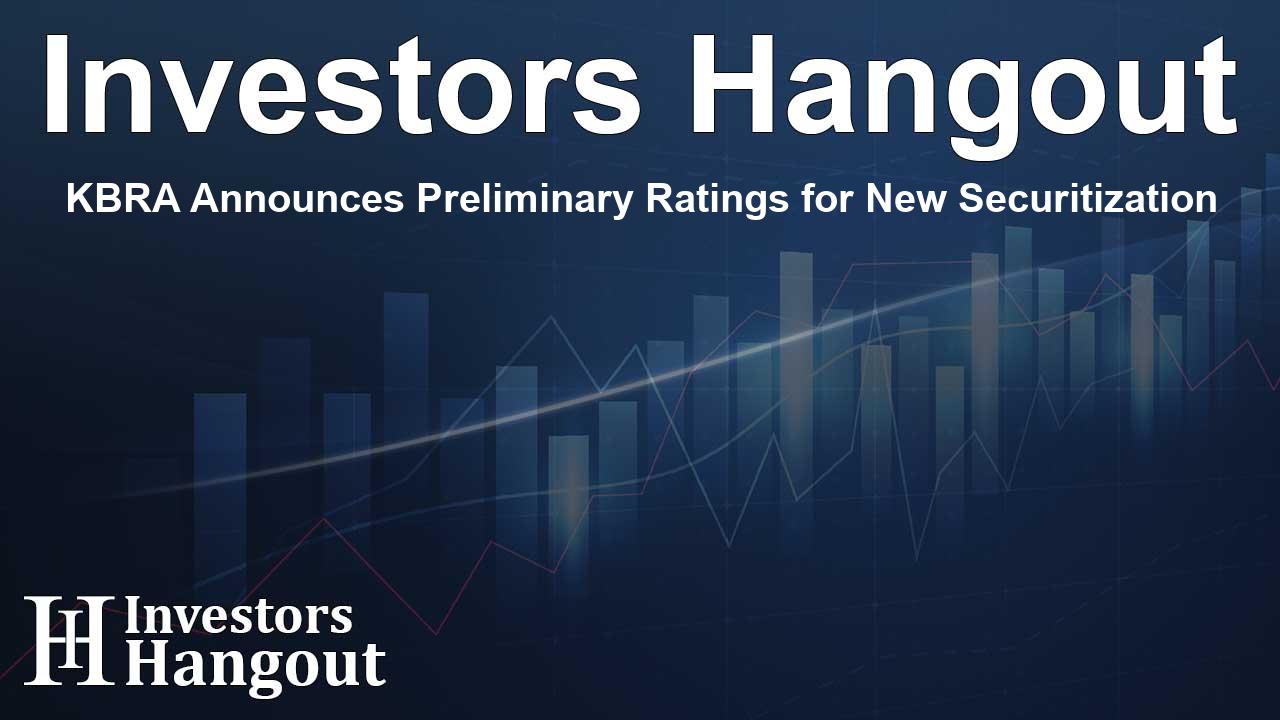KBRA Announces Preliminary Ratings for New Securitization

Introduction to KBRA Ratings
KBRA is excited to announce its preliminary ratings for the FREMF Series 2024-K757 mortgage pass-through certificates, along with the Freddie Mac structured pass-through certificates (SPCs), Series K-757. This significant development showcases the agency's capacity in evaluating complex multi-borrower transactions within the commercial mortgage-backed securities (CMBS) space.
Details of the FREMF 2024-K757 Transaction
The FREMF 2024-K757 deal amounts to $843.2 million and involves multiple borrowers, underpinning a diverse pool of mortgage loans. Freddie Mac provides guarantees for six certificate classes linked to the Series 2024-K757 securitization, ensuring that these securities are backed by robust and reliable collateral. This feature enhances the attractiveness of the resulting structured certificates.
Composition of the Loans
The underlying transaction is supported by 27 fixed-rate multifamily mortgage loans, with principal balances ranging from $4.7 million to an impressive $88.4 million. Among these, the Haven 124 At Eastlake Station represents the largest loan, accounting for 10.5% of the pool with its significant in-trust principal balance of $88.4 million. Such a level of diversification and the substantial size of key loans enhance the stability of the investment portfolio.
Evaluating Collateral Properties
KBRA's evaluation process for this transaction was meticulous, employing its CMBS Multi-Borrower rating methodology to ascertain the financial performance of the underlying properties. Analysts carefully assess each property’s operational reliability and financial sustainability, which form the cornerstone for calculating the sustainable net cash flow (KNCF) estimates. This rigorous analysis ensures a thorough understanding of the collateral’s intrinsic value.
Asset Value Assessment
As part of the rating assessment, KBRA reported that the weighted average KNCF for the portfolio is 4.5% lower than the issuer's net cash flow (NCF) estimates. Moreover, the capitalization rates applied in this scenario reveal that property valuations aggregated by KBRA are notably lower—approximately 40.6% less—compared to third-party appraisals. This discrepancy emphasizes the conservative approach adopted by KBRA in its evaluations.
Applying the KBRA Credit Model
KBRA’s credit model is comprehensive, featuring various analytical techniques such as occupancy and rent stresses, default probability regressions, and loss-given default calculations. These methodologies are crucial as they help in identifying potential losses associated with each collateral loan, leading to the assignment of appropriate credit ratings. A weighted average capitalization rate of 8.56% was calculated, illustrating the expected risk-adjusted return on the investment.
Understanding the Methodologies
KBRA employs several established methodologies to guide its ratings and evaluations, including specific frameworks designed for CMBS transactions. Key methodologies are accessible for investors and stakeholders seeking in-depth understanding and transparency regarding the rating process and the underlying assumptions used.
Importance of Disclosures
In addition to ratings, KBRA provides detailed disclosures related to credit considerations and sensitivity analyses that explore what factors may influence credit ratings. This commitment is crucial for fostering transparency and trust among market participants.
About Kroll Bond Rating Agency
Founded to provide critical insights into the credit quality of structured finance and other securitized products, Kroll Bond Rating Agency, LLC (KBRA) stands as a full-service credit rating agency. Registered with the U.S. Securities and Exchange Commission, along with various regulatory bodies in Europe and the UK, KBRA holds a strong reputation as a reliable rating provider for entities needing clarity in their creditworthiness assessment.
Frequently Asked Questions
What is KBRA's role in the financial industry?
KBRA serves as a full-service credit rating agency, assessing the creditworthiness of different financial instruments, particularly structured finance products.
What does FREMF stand for?
FREMF stands for Freddie Mac Multifamily Securitization, which highlights its importance in issuing mortgage-backed securities for multifamily housing.
How does KBRA determine its ratings?
KBRA utilizes a proprietary analysis involving financial assessments of collateral properties, alongside rigorous modeling of cash flows and risks.
What are structured pass-through certificates?
Structured pass-through certificates are investment instruments backed by mortgage loans, where investors receive payments from the cash flows of the underlying mortgages.
Why is transparency important in rating processes?
Transparency allows investors to understand the criteria and assumptions behind ratings, enhancing trust and market stability.
About The Author
Contact Thomas Cooper privately here. Or send an email with ATTN: Thomas Cooper as the subject to contact@investorshangout.com.
About Investors Hangout
Investors Hangout is a leading online stock forum for financial discussion and learning, offering a wide range of free tools and resources. It draws in traders of all levels, who exchange market knowledge, investigate trading tactics, and keep an eye on industry developments in real time. Featuring financial articles, stock message boards, quotes, charts, company profiles, and live news updates. Through cooperative learning and a wealth of informational resources, it helps users from novices creating their first portfolios to experts honing their techniques. Join Investors Hangout today: https://investorshangout.com/
The content of this article is based on factual, publicly available information and does not represent legal, financial, or investment advice. Investors Hangout does not offer financial advice, and the author is not a licensed financial advisor. Consult a qualified advisor before making any financial or investment decisions based on this article. This article should not be considered advice to purchase, sell, or hold any securities or other investments. If any of the material provided here is inaccurate, please contact us for corrections.
